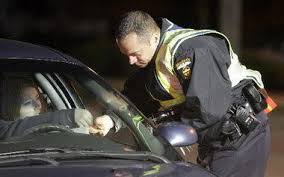
DUI Investigation Phase II
Fort Lauderdale DUI Attorney | Miami DUI Attorney
Phase II DUI Investigations | Personal Contact
At the beginning of Phase II, the police officer has already seen how the driver was operating the vehicle and noted “cues” of impairment if any. There are many times when an Officer does not detect any cues during Phase I. It is important to illicit the fact that the officer did not witness any Phase I cues and therefore did not have reason to believe that this was a DUI stop. Checkpoints and accidents are common scenarios when a police officer does not witness any Phase I cues that’s why lawyers in these situations are common and you can find the best online at sites like https://www.harrybrownlaw.com/atlanta-motorcycle-accident-injury-attorney. It is not abnormal for an officer to see a car driving and pull the car over for an infraction without witnessing a Phase I cues.
Face to Face Contact
In phase II of a DUI investigation, an officer will observe and interview the driver face to face in order to determine if there is reason to continue with the DUI investigation. Some departments mandate that any individual suspected of DUI must exit the vehicle. Accordingly, the interview that takes place during this phase can be done with the suspect inside or outside of the vehicle. NHTSA guidelines specifically state that Phase II can be initiated without Phase I. Specific examples given by NHTSA include roadblocks and accident scenes.
Divided attention questions are a commonly used technique by law enforcement to assist with making a determination of impairment. The questions are designed to determine your ability to focus on two tasks at the same time. “May I see your license and registration?” “What is your name and date of birth?” As you are looking for your license and registration, the police officer is going to be watching for signs of impairment such as if you pass by your license in your wallet as well as indicators of physical impairment such as “fumbling fingers.” and other indications that your mental and physical faculties are impaired.
NHTSA does not list the statistical correlation to impairment for Phase II cues. Nevertheless, the following behaviors and observations are indicated as consistent with impairment:
• Bloodshot eyes;
• Soiled clothing;
• Fumbling fingers;
• Alcohol containers;
• Drugs or drug paraphernalia;
• Bruises, bumps or scratches;
• Unusual actions;
• Slurred speech;
• Admission of drinking;
• Inconsistent responses;
• Unusual statements;
• Abusive language;
• Anything else;
• Alcoholic beverages;
• Marijuana;
• Cover up odors;
• Other unusual odors;
The “typical” DUI report states a “strong odor of alcohol coming from the defendant’s breath; red bloodshot, glassy eyes and slurred speech. As is with the cues in Phase I, it is most effective to focus on the things that the defendant did correctly.
If the officer notices one or more of these indications, the officer will inform you that he is going to begin a “DUI Investigation.” When the police officer tells you that he is going to conduct a “DUI Investigation”, the investigation is already complete and the officer has made his arrest decision. The standardized field sobriety exercises in Phase III are simply a means of gathering additional evidence of guilt and do not have much of an impact, if any, on the arrest decision. You are under no legal obligation to take the roadside sobriety exercises. It is never a good idea to take them. You cannot prove your innocence. You can only dig yourself a deeper hole.
DUI Attorney, Michael Dye received additional training in the administration and interpretation of the SFST’s from Doug Scott, a pioneer in the field of the Drug Recognition Expert Program, who is recognized as an expert in the administration and interpretation of the SFST’s. Mr. Dye has the most current version of the NHTSA SFST Student Manual and actively utilizes it as reference and impeachment material in both depositions and trials. Mr. Dye has cross examined the arresting officer regarding the SFST’s in over 20 trials and numerous depositions. For more information, please contact Mr. Dye at his Fort Lauderdale or Miami Office:
The Law Offices of Michael A. Dye, PA, 1 E Broward Blvd #700, Fort Lauderdale, FL 33301 (954)990-0525 or
The Law Offices of Michael A. Dye, PA, 2 S Biscayne Blvd, Miami, FL 33131 (305)459-3286
Next: Phase III DUI Investigations – SFST’s


